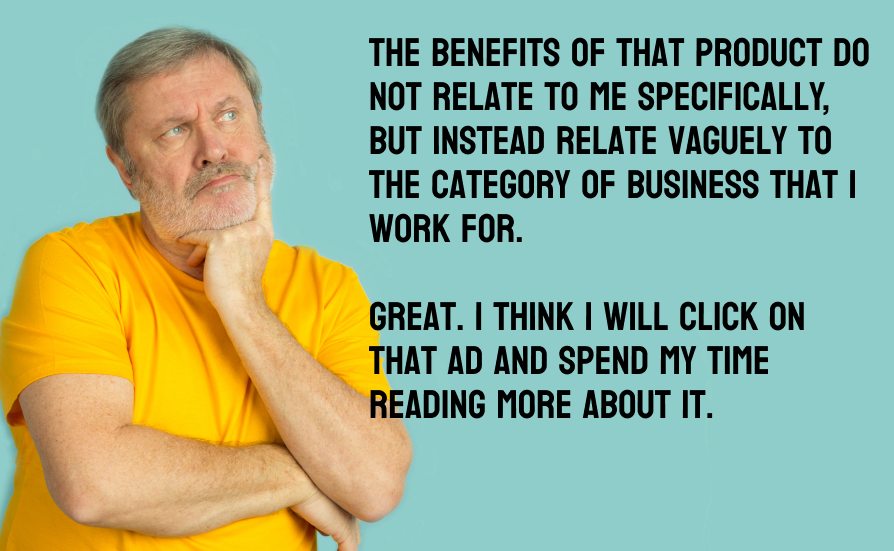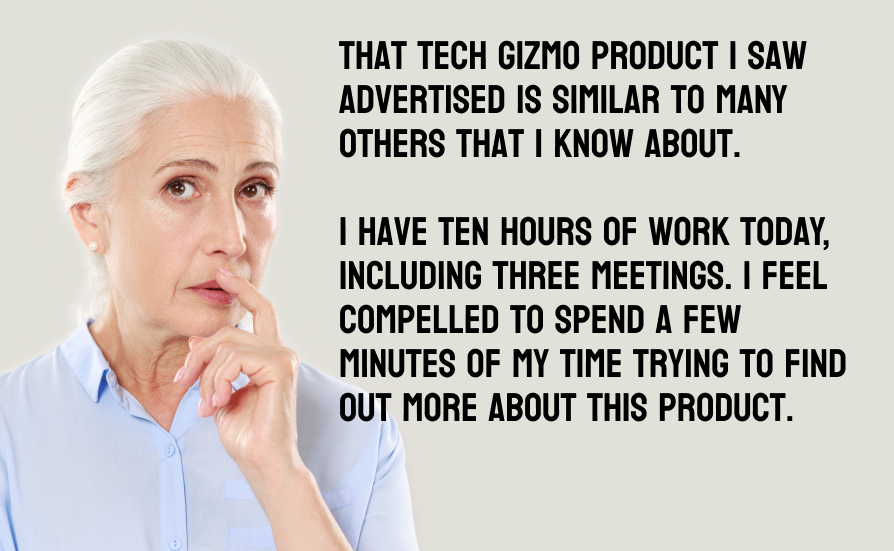
The age-old B2B marketing aphorism still holds: ‘you don’t sell to a business, you sell to a person’. And yet have a look at the language used in online ads:
- Our product helps companies to achieve XYZ
- Our product is crucial in the XYZ sector
- Our product does X and Y and Z
Have a look at your own messaging. Does any of it look like the sentences above?
A human being will decide to click on your ad. . .or to keep scrolling. In the case of HealthTech, those human beings will often be a:
- Medical Director
- Chief Clinical Information Officer
- Head of Clinical Operations
- Director of Innovation
What do each of these people worry about? Try to visualise their daily schedule. Think of the pressing deadlines that they need to meet each day. How likely is it that one of these individuals will use their time to unpick the message that you haven’t clearly conveyed?

It’s very easy to get wrapped up in the cleverness of new tech and the slickness of design. But are you absolutely sure that the cleverness and slickness is going to make the life of your potential customer easier?
A warning sign is usually the level of latinate healthcare language in your ads, on your site, or in your emails. For example:
“Deployment of our integrated, customisable, modular, bespoke, patient-centric, intuitive solutions platform enables positive engagement”.
Probably true. . .but also total nonsense.
And, to prove a point, here’s some language found on a few well-known HealthTech websites:
- ‘streamlined user journeys’
- ‘fully integrated’
- ‘human-centered design’
- ‘enabling us to impact each touchpoint’
- ‘accommodates the complex research landscape in an intuitive and simple user interface
What value does any of the above really add?

As has been said many times, online marketers have a tiny amount of time to really connect with the online user. To be more specific:
- Linkedin Post (Desktop): three seconds
- Linkedin Post (Mobile): one second
- Tweet (Desktop, unusual): two seconds
- Tweet (Mobile): one second
- Email (once opened on Desktop): three seconds
- Email (once opened on Mobile): two seconds
Unless your product is produced and marketed by you alone, then your potential customer probably has three or four similar entities sitting in their headspace already.
With that in mind, in the time windows described above, does your messaging really work?